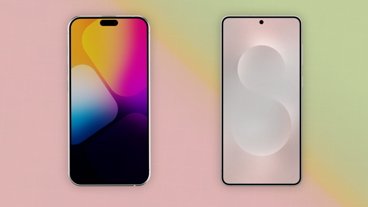Apple Pay is now the fifth most widely available online payment option as more shoppers ditch traditional checkout forms for faster, mobile-first alternatives.
A May 2025 study by Merchant Machine found Apple Pay is available on 5.25% of websites globally. That puts it just behind American Express and ahead of Shopify Pay, Google Pay, and Stripe.
PayPal remains the clear leader, appearing on more than a quarter of websites at 26.24%.
Saudi Arabia leads in Apple Pay adoption, with over 20% of websites offering it. Armenia, Ukraine, Kazakhstan, and the United Arab Emirates also rank highly.
In the United States, states like Hawaii and Wyoming top the list, with more than 17% of websites supporting Apple Pay.
These regions aren't random. Apple's market share in Saudi Arabia has grown alongside strong iPhone sales, high youth engagement with mobile technology, and national investment in digital infrastructure.
Across the Gulf, Apple's ecosystem fits naturally into a broader push toward digital-first government and financial services. Apple Pay's rise in online availability reflects a long game.
The growth also ties into Apple's expanding Services business. In its Q2 2025 earnings, Apple reported $26.6 billion in Services revenue, which includes Wallet, Apple Card, and Apple Pay.
How Apple Pay works & why it's growing
Apple Pay allows users to make purchases using cards stored on their Apple devices. Transactions are confirmed using Face ID, Touch ID, or a passcode.
Instead of sending actual card numbers, Apple Pay generates a unique token and one-time code.
That privacy-first approach has become a selling point. Consumers don't have to share payment details with websites, and biometric verification feels more secure than typing in credit card numbers on mobile.
The simplicity of Apple Pay helps speed up the checkout process, which benefits merchants as well. Faster checkouts mean fewer abandoned carts, especially on smartphones.
For retailers and developers, though, there are tradeoffs. Apple requires banks to pay a 0.15% fee per credit card transaction and sets strict platform rules for apps and websites that integrate Apple Pay.
Some smaller banks and developers have been hesitant to fully embrace the platform due to these limitations.
Apple Pay's position as a top-five option doesn't necessarily mean it sees the same level of transaction volume as Visa or PayPal. In China, mobile wallets like WeChat Pay and Alipay dominate daily purchases, and Apple Pay barely registers in market share.
European shoppers often prefer Klarna or SEPA-based transfers, depending on the country.
In many of these markets, Apple's tight control over near-field communication (NFC) technology has been a sticking point. In July 2024, the European Commission ended an antitrust investigation after Apple agreed to open NFC access to third-party payment apps.
But in the United States, the Department of Justice is still probing whether Apple unfairly blocks competitors from offering their own wallets with tap-to-pay support.
Another constraint is hardware exclusivity. Apple Pay only works on Apple devices, which means Android users are excluded by design. In Android-heavy regions, that limits its growth potential, no matter how seamless the experience may be.
Apple has steadily added new capabilities, such as expanding Tap to Pay on iPhone to more countries, enabling small businesses to accept contactless payments without extra hardware. However, the company recently canceled its Apple Pay Later program.
Instead, Apple is choosing to partner with third-party providers for buy-now-pay-later services going forward.
Where Apple Pay is headed next
With Apple Pay, Apple Cash, Apple Savings, and Apple Card under its belt, Apple now operates as a financial platform too. If it expands its partnerships with banks, point-of-sale systems, and app developers, Apple may become a central part of online money movement.
Shoppers benefit from fewer checkout steps and stronger privacy. Merchants see better mobile conversion rates and a streamlined experience. For developers, Apple Pay is becoming a default expectation for any serious commerce app.
 Andrew Orr
Andrew Orr











-m.jpg)





 Wesley Hilliard
Wesley Hilliard
 Marko Zivkovic
Marko Zivkovic
 Amber Neely
Amber Neely
 Malcolm Owen
Malcolm Owen













3 Comments
Adjacent topic: If you have an Apple Card and haven't gone into Wallet » clicked the ellipsis in the upper-right corner » Account Details » Message to request a "credit limit increase" within the past year I recommend doing so. Even if you pay off your card monthly the CC companies will usually report before your payment is due and the percentage of your used credit at the time of the report will count against you as a percentage of your used revolving credit.